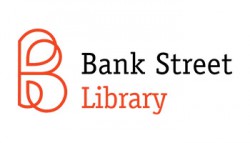Part III: Are All Book Covers Created Equal? Bank Street 6th-Graders Visit a Certain Bookstore Chain
What happens when you take a group of smart, compassionate, and insightful 6th-graders to a giant bookstore chain and ask for their thoughts? Read on.
If you are new to this project, you may want to check out Part I (race in covers) and Part II (gender in covers).
“It was sickening to look at all the stereotypes, the assumptions.”

Thoughts on the section for young kids:
“In the picture book section, I noticed that everything seemed ‘color coded.’ It was clear which books were for girls and which books were for boys. The books were either pink and purple or blue and black. I also noticed that there were no truck-themed books with female characters and no fairy books with male characters.”
“Most of the covers had one gender. There were boys or girls, not both.”
“I know that kids’ minds aren’t developed enough to understand these issues, but as they grow up, I hope they realize how serious this issue really is. People have the right to like any color they want and be anything they want to be.”
“I think that once the people who buy books realize that boys can bake and girls can fight dragons, authors will start making more books like that.”
Thoughts on the section for middle-grade readers:
” ‘Girl books’ are mostly about friendships or animals, or two best friends go to the animal shelter and save all the puppies.”
“On most of the covers it was really obvious whether they were trying to sell to boys or girls… Even some of the titles made it very obvious, ex: “Just for Girls” “Stories for Girls” “Just for Boys” etc. I know some girls who will want to read “just for boys” books, because maybe they like sports, or aliens, or trucks. But they will not want to read that book, because it says “just for boys.”
“In the chapter book section, I saw that most of the books that had non-Caucasian characters didn’t have that character on the cover.”
“Society is almost afraid of putting a dark-skinned or Asian character on the cover of a book. I feel like these are minor forms of segregation.”
Thoughts on the teen section:
“The teen section was even worse. About half of the books had a name like ‘Sisterhood’ and a subtitle like ‘What secrets shouldn’t we keep?’. They all had covers with two girls glaring away from each other. The other half of the books featured a powerful looking guy and a desperate looking girl that were clearly ‘in love.’ “
“I was disgusted that the authors didn’t seem to realize that not every girl is having problems that she needs her boyfriend to solve.”
“I think I was on the girls side of the bookshelf, but even so, that just shows that Barnes and Noble separates their books by gender.”
“Most girls’ number one priority is not their appearance.”
“I saw all skinny people on the covers which gives the message to teens that they need to be skinny. Also I saw very few books with about diverse sexual orientations or races besides caucasian… Most of the books were about relationships, marketing the message that you should have a boyfriend or else you’re unpopular.”
“On the covers, I saw thin, pretty girls. I didn’t see any overweight girls or anyone with acne. I think that these covers shape an idea of perfect in a girls mind, and makes them want to be like that, even though everyone was born perfect.”
“I didn’t see a book with a biracial main character. I think that they just don’t want to go in to race at a young age… really for the teenager section, it is not fair in any way.”
“When I went to the teenager section, I wasn’t surprised. On every book cover where you could see the person’s face, they were VERY serious. Every cover with boys and girls, and boyfriends, and girlfriends, were almost always white. Or you couldn’t see their faces because they were kissing. Also, basically all of the teenager books were about drama, love, seriousness, etc. But something else I saw they had was, suicide. And I don’t really like that, because I’ll admit, sometimes I get scared. Also a lot of the books were about getting angry and getting revenge. Or even turning on your friends, or getting depressed.”
“All the teen books showed girls as if they always had problems that they needed a guys help with in order to solve. None of them were in a powerful stance or position and all the blurbs talked about the impossible problems that the girls are having with boys and friends and their parents and school work.”
“The books were all predictable, with endings that you could tell by hearing the title.”
“The next section we looked at was the teen section. All this section had was romance, love stories, depressing stories, stories about suicide, etc…”

In Part IV, we host two awesome editors at Bank Street and are pleasantly surprised to find that they share many of our concerns and are invested in changing things.
Edit 7/16: Part IV is up. Awesome editors have an honest conversation with the kids.
Edit 7/29: The wrap-up, Part V, is now up. We ruminate and reflect.
EDIT from 2015: Check out the followup series, in which we reflect on how this curriculum has evolved over the past few years, here.
-Allie Jane Bruce

Trackbacks